
Beverly Jenkins wants others to help her grow the historical branch of the African-American romance tree, but she can’t deny the perks of growing it largely alone. “Every time you buy a book, you help a sister pay a light bill,” Jenkins said as the standing-room-only audience startled the Library of Congress conference room with laughter. She sobered, though no one could be heard shushing us. Any librarians in attendance might have been absorbed in the many climaxes of Destiny’s Captive, one of Jenkins’s historical romances (“his lips were searing the bare skin above her corset and chemise”) or Sexy/Dangerous, a contemporary romantic suspense where the heroine swaps the corset for a thong (“the sexiest bits of froth ever invented”). The quiet allowed Jenkins, typically as sharp with the one-liners as she is with her prose, to make a more serious point. “It would be great to be able to expand that canon to include more stories, more bibliographies so that the readers can not only enjoy the love stories but also enjoy the history that goes with it,” she said.
Jenkins and a cadre of romance writers, publishers, editors, and readers convened at the Library of Congress as part of the Popular Romance Project, a multimedia enterprise that included a sneak preview of filmmaker Laurie Kahn’s documentary, “Love Between the Covers,” and a day-long conference on the billion-dollar genre. Jenkins and Brenda Jackson, two of the most renowned novelists writing African-American popular romance, easily drew the biggest followings. The conference felt like crashing their family reunions—a feeling Jackson knows well. She and her fans gather for biennial cruises that celebrate the sexy Westmoreland and Madaris clans from her two most popular series. “‘You can’t get this many people going to their real family reunion,’” Jackson recalled her pastor observing about the fans who wore their Madaris family reunion T-shirts on the cruise. “And because it was integrated, white, black, anyone who wanted to be a part of the Madaris family, people on the cruise were getting confused.” Jackson understood the draw: “I think that’s what books do: bring people together.”
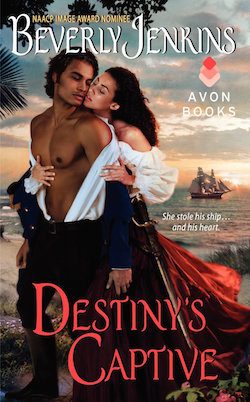 Romance novels appeal for a number of reasons. There are the “naughty bits” that leave the reader as breathless as the heroine, to be sure. Much of their hold over readers also lies in a forthright presentation of feminism. In these predominantly by-women-for-women works, the protagonists are not punished for pursuing fulfillment; rather, they are rewarded for it with the “happily ever after,” or “HEA,” that defines a romance novel—and typically, with some really great sex along the way. Romance novels prioritize being loved for who you are, no concessions needed. It’s a message that resonates with black women and others who have been denied their HEAs in real life.
Romance novels appeal for a number of reasons. There are the “naughty bits” that leave the reader as breathless as the heroine, to be sure. Much of their hold over readers also lies in a forthright presentation of feminism. In these predominantly by-women-for-women works, the protagonists are not punished for pursuing fulfillment; rather, they are rewarded for it with the “happily ever after,” or “HEA,” that defines a romance novel—and typically, with some really great sex along the way. Romance novels prioritize being loved for who you are, no concessions needed. It’s a message that resonates with black women and others who have been denied their HEAs in real life.
In the United States, black women find their bodies and their desires constantly devalued not just by the publishing industry, but also by the very institutions designed to protect them. Sandra Bland is the latest black woman to die in police custody, joining the ranks of the fallen from which #SayHerName launched to draw attention to the invisible women whose bodies and lives have been lost and devalued because of their color. Additionally, media representations of black women are hard to find and can be even harder to watch because of how they are framed, given the media’s penchant for slim and, more often than not, white bodies. When Nicki Minaj’s “Anaconda” video failed to garner an MTV Video Music Awards Video of the Year nomination, she offered a valid critique of entrenched racism that Taylor Swift initially misconstrued as personal attack. Minaj summed it up on Instagram: “Nothing to do with any of the women, but everything to do with a system that doesn’t credit black women for their contributions to pop culture as freely/quickly as they reward others. We are huge trendsetters, not second class citizens that get thrown crumbs.”
Romance novels can’t erase the past, and the present. Chapter by chapter, they do strive toward agency. Every turn of the page conveys a powerful message about what black women deserve, not only to black women but also to the society in which we live. With their strong, successful, and sexy heroines, Jenkins, Jackson, and their fellow black romance novelists are vanguards. They are changing perceptions, one happily ever after at a time.
*
Black women have long encountered obstacles to their happy endings. Slavery precluded any chance for an outcome other than being reduced to property, Darlene Clark Hine, a professor and historian at Northwestern University and self-proclaimed Beverly Jenkins/Brenda Jackson superfan, said at the conference. She pointed to Running a Thousand Miles for Freedom, a slave narrative written by William and Ellen Craft. Ellen refused to bear children into slavery, and so the couple did not consummate their marriage until they had escaped.
Post-slavery, a black woman would be subjected to harsh judgments. She would be called the overbearing Sapphire, or the asexual Mammy, or the hypersexual Jezebel. With the Mammy and the Jezebel, you had either “the woman who essentially is not at all interested in sex or [who] should not be interested in sex because the larger society has typecast her as this wanton creature,” Hine said. “When you consider black women’s position in the late 19th century and add race and gender together—race, gender, and class together—the sex scene becomes very, very complicated.”
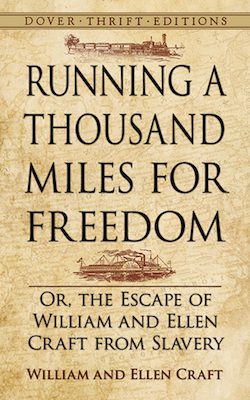 Over the next century, respectability politics would trump sexual exploration for black women struggling to command decent, let alone equal, treatment. At the same time, black men were perceived “as this threat to virtuous white womanhood,” escalating the myth. “It takes to the 20th century before we have this breakthrough with romantic literature in a very public way celebrating sexuality,” Hine said.
Over the next century, respectability politics would trump sexual exploration for black women struggling to command decent, let alone equal, treatment. At the same time, black men were perceived “as this threat to virtuous white womanhood,” escalating the myth. “It takes to the 20th century before we have this breakthrough with romantic literature in a very public way celebrating sexuality,” Hine said.
Indeed, romance novels celebrate, rather than shame, black women for their desires—and not just for their preferences in the bedroom. Above all, romance novels celebrate their right to a happy ending. But a happily ever after cannot exist in a vacuum. While an author like Jenkins more than satisfies her characters’ appetites, she also honors their past. It’s why her hero is a Black Seminole in Topaz and a Buffalo Soldier in Night Song. In Indigo, her heroine’s hands and feet bear blue-black stains from an enslaved childhood working the indigo fields. In the documentary Love Between the Covers, Jenkins led her readers on a tour of South Carolina’s Penn Center, one of the first schools for emancipated slaves, and the Old Slave Mart.
Jenkins’s novels don’t focus on the pain that her readers are already familiar with from black history. The pain is part of the story, not the whole story, not something she dwells on even in historical romance. She’ll still sometimes include the violence slaves experienced at the hands of their white male owners—though the way romance novels portray black women taking control of their bodies and sexuality sends a powerful message about agency. To Jenkins, her books provide “edutainment” and of course, a happy ending. Despite slavery, despite Jim Crow laws, despite enduring discrimination, “we still built colleges, we still had birthdays, we still loved, we still got married, we still had children,” she said in the documentary. “Those are the kinds of things that I think have been missing from the African-American experience as told by the larger media.”
She immediately followed up that astute observation with another: “It’s like, the African-Americans, we came here as slaves, we were freed in 1865, and then it was like The Borg took us from the planet for another 150 years.”
*
Carol Stacy, publisher of the industry magazine RT Book Reviews, attributed the origins of African-American romance to Odyssey Books, a small, Maryland-based press launched by RT subscriber and supporter Leticia Peoples in the early ’90s. Peoples approached RT with a mission to feature characters of color at a time when black romance novelists were generally writing white characters, Stacy said. Peoples discovered Brenda Jackson, Donna Hill, and many of the “star authors” whose popularity continues today.
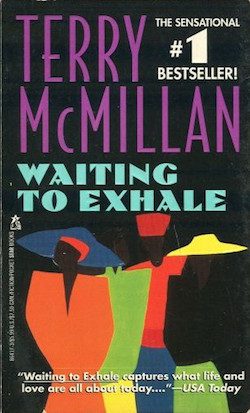 In that same period, the publication of Terry McMillan’s Waiting to Exhale in 1992 showed that black heroines could sell books—and that women of all backgrounds would buy them, including women of color. “Publishers did not think black women read,” Jenkins said. “Every time I was in the bookstore, there were a bunch of other black people in the bookstore, and I don’t know what they thought we were doing.”
In that same period, the publication of Terry McMillan’s Waiting to Exhale in 1992 showed that black heroines could sell books—and that women of all backgrounds would buy them, including women of color. “Publishers did not think black women read,” Jenkins said. “Every time I was in the bookstore, there were a bunch of other black people in the bookstore, and I don’t know what they thought we were doing.”
Kensington Publishing was the first big-name publisher to launch an African-American romance sub-imprint, Arabesque, in 1994. Arabesque, in turn, was the first to publish Brenda Jackson, who now writes exclusively for Harlequin and will publish her 106th book by the end of the year. (Jenkins writes for Avon.) Ownership of Arabesque has shifted multiple times, including to BET for a number of years; it is now under Harlequin’s Kimani Press. Kensington’s current African-American sub-imprint, Dafina, publishes an array of genres, including romance.
Though the popularity of African-American popular romance proved the selling power of black writers and black protagonists, it is relatively new. Stereotypes of how women should be, and especially how black women should be, persist in a media landscape very much stacked against people of color.
*
Perhaps the most visible shift toward diversity in the media right now is occurring not in publishing but on the small screen. “With the success of television shows like Empire, How to Get Away with Murder, Scandal, Fresh off the Boat, Black-ish, and Jane the Virgin, it is abundantly clear that consumers want a diverse cast of characters that really reflects the world we’re living in,” Mercedes Fernandez, an editor at Kensington, told me. Those shows are still the exception to the rule, and their characters are subject to the judgment of a white society. When a black character like Annalise Keating in How to Get Away with Murder expresses her strength, the New York Times’s then-television critic Alessandra Stanley reverts to the “angry black woman” trope instead of lauding the complexity of such roles—and lamenting the lack of them.
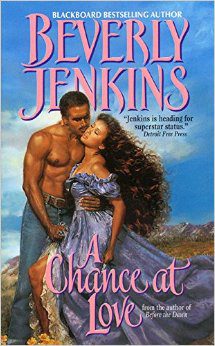 In white Hollywood, roles for women of color, including those for black women, are limited at best and damaging at worst. Roxane Gay explores the tired tropes in several essays in her collection, Bad Feminist. Even Tyler Perry, one of the most successful black producers in Hollywood, foists false moralism on black women: “While there are ‘good’ women in his films, there are so many bad women—women who are unfulfilled by their lives and/or marriages and are then punished when they try to find fulfillment. An unspoken message, all too often, is ‘You should be grateful for what you’ve got,’” Gay writes.
In white Hollywood, roles for women of color, including those for black women, are limited at best and damaging at worst. Roxane Gay explores the tired tropes in several essays in her collection, Bad Feminist. Even Tyler Perry, one of the most successful black producers in Hollywood, foists false moralism on black women: “While there are ‘good’ women in his films, there are so many bad women—women who are unfulfilled by their lives and/or marriages and are then punished when they try to find fulfillment. An unspoken message, all too often, is ‘You should be grateful for what you’ve got,’” Gay writes.
That’s about as far from the takeaway of romance novels as you can get. Take Max Blake, the heroine of Jenkins’s Sexy/Dangerous and the great-great-great granddaughter of Loreli Winters, the feisty mail-order bride from A Chance at Love. (Most of the heroines in Jenkins’s contemporary romances descend from those in her historicals—and inherit their ancestors’ strength.) “Ex-marine, ex-cop, and a whole lotta ’tude, Max doesn’t have time for anything but her job. Her latest assignment: to protect Dr. Adam Gary. Her problem: he doesn’t want her there.” By the end of the book, Adam admires Max’s outspokenness, independence, and strength, the very qualities that had initially rankled him and that allowed her to do her job—and do it well.
Along the way, Adam also admires that thong of hers: “Something about the thin strips of lace running between a woman’s thighs and then teasingly outlining her hips made him want to touch, slide, and fondle; made him want to ease the lace aside and kiss his way to paradise. Fitting thought to action, he did just that.” A man not only pleasuring a black woman but also valuing her pleasure? Jenkins has her characters humanize each other and not just fetishize.
*
As good as Adam looks when he ditches his shirt (and drops his pants), there’s more to the art of seduction than his pecs. For Carrie Miller, a romance reader in her 70s, it’s important to see and feel a connection with someone who looks like you, sounds like you, listens to the same music, uses the same oils. Those characteristics add up to a hero that Miller recognizes—and desires. It’s enough to make her stop and exclaim, “Oh yeah! We can get with that!”
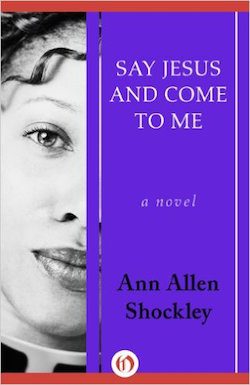 Seduction is as much about the kind of record a man selects as the chisel of his chest, Darlene Clark Hine reiterated. “It’s all the different signals that the body emotes and that women can read and decide whether somebody is alluring enough to invest her time to run a thousand miles to freedom,” she said. That journey takes on special meaning if you think about how poorly the media portrays black men. You can forget the 180,000 black men who volunteered for the Union Army or the pioneering doctors who were black men, Jenkins said by phone after the conference. “The black men in my life have always been heroes,” she said. “Romance is one of the few, if not the only, genre where you’re going to see consistent great examples of black men.”
Seduction is as much about the kind of record a man selects as the chisel of his chest, Darlene Clark Hine reiterated. “It’s all the different signals that the body emotes and that women can read and decide whether somebody is alluring enough to invest her time to run a thousand miles to freedom,” she said. That journey takes on special meaning if you think about how poorly the media portrays black men. You can forget the 180,000 black men who volunteered for the Union Army or the pioneering doctors who were black men, Jenkins said by phone after the conference. “The black men in my life have always been heroes,” she said. “Romance is one of the few, if not the only, genre where you’re going to see consistent great examples of black men.”
You’ll also see seduction happen regardless of sex and gender. Len Barot, president of LGBTQ publisher Bold Strokes Books and best-selling author under the nom de plume “Radclyffe,” referred to Ann Shockley’s Say Jesus and Come to Me (Avon, 1982) and Loving Her (Avon, 1974), two of the first African-American lesbian romance novels. The blog Sistahs on the Shelf, which reviews black lesbian fiction, assesses these early works and expands beyond the romance genre. “As far as black homosexual literature, we’re in an explosive area now, and more and more work is coming out,” Hine said.
But it’s underserved by a publishing industry that self-identifies as 89 percent white, 3 percent Asian, 3 percent Hispanic, and just 1 percent African-American, according to a 2014 Publisher’s Weekly survey. Case in point: At the conference, Jenkins shared a story about feedback she received on one of her manuscripts. “We all know what ‘[keeping it on the] down low’ means, right? Well, the copyeditor did not,” she said. Judging from the laughter in the room, the audience, and especially her fans, got it. “And she sent me back a little note that said, ‘This is not correct. You should say, ‘Keep it on the low shelf.’ And I said, ‘How about I don’t say that?’ So you know, you’ve got to have a sense of humor to do this.”
*
The demographics of publishing haven’t changed much, but romance readers have. They are increasingly multicultural, and they want more books with characters who look like them. Romance authors like Rebekah Weatherspoon, who founded #WOCInRomance, and K.M. Jackson behind #WeNeedDiverseRomance,
Buyer demand is pronounced. A 2014 Pew Research Center study found that college-educated black women read the most of any other demographic group, something Beverly Jenkins could have told you. And others have joined her on the black historical romance branch. Today, authors like Kianna Alexander, Lena Hart, Alyssa Cole, and Piper Huguley are expanding the canon.
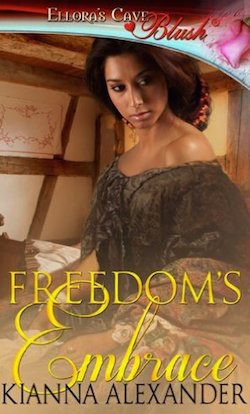 Conferences unite readers throughout the year. The Romance Slam Jam conference has been bringing together African-American romance authors and their fans in Dallas, Texas, for twenty years; Jenkins will keynote the 2016 conference. Last year, the RT Book Lovers convention included a special tribute to Jenkins, Jackson, and Sandra Kitt as pioneers of multicultural romance fiction. Authors of all backgrounds can be found at the annual Romance Writers of America convention. This year’s National Book Festival will feature a romance pavilion, and Jenkins will be there.
Conferences unite readers throughout the year. The Romance Slam Jam conference has been bringing together African-American romance authors and their fans in Dallas, Texas, for twenty years; Jenkins will keynote the 2016 conference. Last year, the RT Book Lovers convention included a special tribute to Jenkins, Jackson, and Sandra Kitt as pioneers of multicultural romance fiction. Authors of all backgrounds can be found at the annual Romance Writers of America convention. This year’s National Book Festival will feature a romance pavilion, and Jenkins will be there.
The question is how the publishing industry will respond. Kensington soon plans to make Dafina its own official imprint, Steve Zacharius, the company’s president and CEO, said via email. Some contend that merely having black characters does not make a genre, nor an imprint, a point raised during the Romance Writers of America convention in late July. One thing won’t change, said Fernandez, the Kensington editor: “A HEA will never go out of style.”
For black romance readers, a happily ever after has been in style for just over twenty years. It isn’t getting old anytime soon. Jenkins echoed that sentiment when asked about the documentary. “As an African-American woman, you may hate to bring the race thing out,” she said. “It showcases the diversity, because a lot of times people had no idea that we’re at the table also. And we’re writing good books,” she said, pointing out that Jackson is “making like a bazillion million dollars for Harlequin every year.”
“People need to see that, love is love, regardless of who you are, whether you love someone of color, whether you love another woman,” Jenkins said. “Love is love.” In a society that routinely relegates black women to the margins, or worse, romance novels underscore that their desires and their bodies are worthy of happily ever afters.




